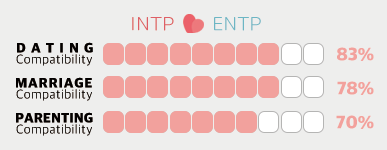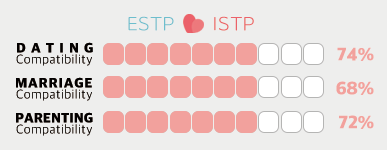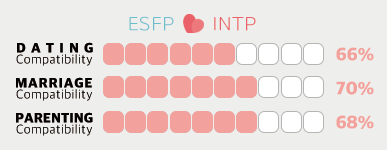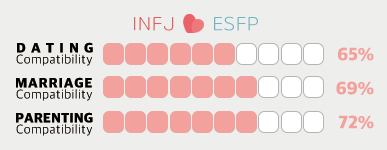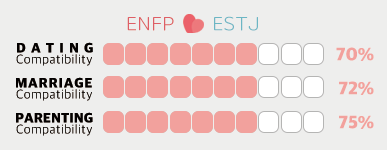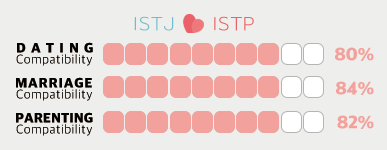ISTJ Male and ESFP Female Compatibility – When Planning Meets Pure Spontaneity
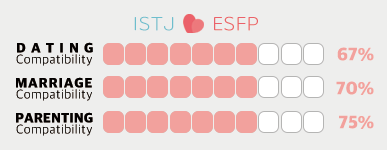
Before diving in, let’s take a look at this curious match.
The ISTJ man plans out his day neatly each morning, while the ESFP woman changes everything based on her mood.
Spending time together feels fascinating but understanding each other takes a real amount of effort.
Their energies are wildly different, yet if they can respect those differences, they just might create something special.
How It All Starts
At first, they struggle to connect because of their completely different styles.
The ISTJ looks for stability in a partner, while the ESFP is drawn to fun and emotional connection.
However, after repeated encounters, the ISTJ begins to feel drawn to the ESFP’s brightness,
and the ESFP grows curious about the ISTJ’s steady sincerity.
Usually, it’s the ESFP who initiates things first, and the ISTJ slowly warms up to the relationship over time.
Compatibility Score – 67%
Their core values differ so much that staying connected can be exhausting if not managed carefully.
The ISTJ loves structure, rules, and orderly flow,
while the ESFP moves freely, following emotions and spontaneous decisions.
For this relationship to work long-term, it’s not about one person adapting to the other—
it’s about mutually accepting their different ways of living.

Relationship Style
The ISTJ prefers to set firm plans for dates and handle relationships with responsibility,
paying close attention to even the smallest details.
The ESFP is guided by mood, weather, and spontaneous excitement.
For her, love should feel thrilling and light-hearted.
This can sometimes leave the ISTJ feeling overwhelmed,
while the ESFP might think the ISTJ is too stiff or serious.
Date Ideas That Actually Work
The ISTJ plans a route, but leaves room for ESFP-style changes along the way
Structured dates like: museum → market stroll → famous local eatery
Flexible dates like: cute café → spontaneous countryside drive
The key is to build enough flexibility into the day to keep both happy.
How They Argue
The ISTJ hates broken promises or sudden plan changes.
The ESFP, when feeling upset, expresses it immediately and openly.
Although they understand each other’s reasons deep down,
their styles are so different that small frustrations accumulate rather than explode.
The ISTJ silently feels disappointed, while the ESFP wonders, “What’s the big deal?”
If they don’t clear the air, emotional distance grows quietly between them.
If They Break Up
The ISTJ tries hard to maintain the relationship to the very end.
But once he decides a boundary has been crossed, he cuts ties without regret.
The ESFP, on the other hand, lets go naturally once her feelings fade.
After a breakup, the ESFP tends to move on quicker,
while the ISTJ takes longer to fully process the loss and feel the emptiness.
If They Get Married
Even after marriage, the ESFP’s impulsiveness and emotional swings will remain part of life.
The ISTJ needs time to fully accept this, but thanks to his strong sense of responsibility,
once their daily routines settle, they can enjoy a stable long-term partnership.
Seeing their differences as part of a “teamwork dynamic” will help the marriage thrive.
Marriage Compatibility – 70%
At first, conflicts are common, but once they establish a healthy routine, stability follows.
The ESFP benefits from the ISTJ’s practical, financial sense,
and the ISTJ appreciates the ESFP’s vibrant social energy.
However, intentionally building emotional intimacy rituals will be key to sustaining the relationship.
Parenting Compatibility – 75%
The ISTJ naturally provides stability, structure, and clear rules for children.
The ESFP brings fun, emotional warmth, and spontaneous joy.
If they balance their strengths well, they can be a wonderful parenting team.
However, without clear discussions early on, conflicts may arise—
especially if the ESFP treats the child like a friend, while the ISTJ expects stricter discipline.
Watch Out For
ISTJs should not dismiss the ESFP’s spontaneity as irresponsibility.
ESFPs should not mistake the ISTJ’s stoicism for a lack of love.
They must accept that their approaches are different,
and work on meeting each other halfway with open, understanding conversations.
Final Thoughts
The ISTJ man and ESFP woman are like two travelers with very different maps.
One carries a planner everywhere; the other moves wherever her heart leads.
If they stop trying to “fix” each other and start seeing the differences as something fun,
they can actually stay together much longer than anyone expects.

